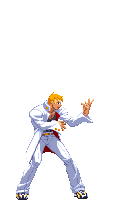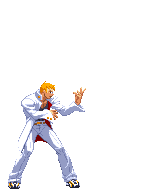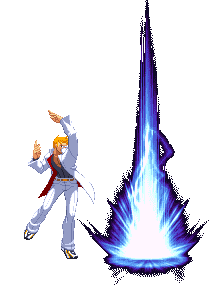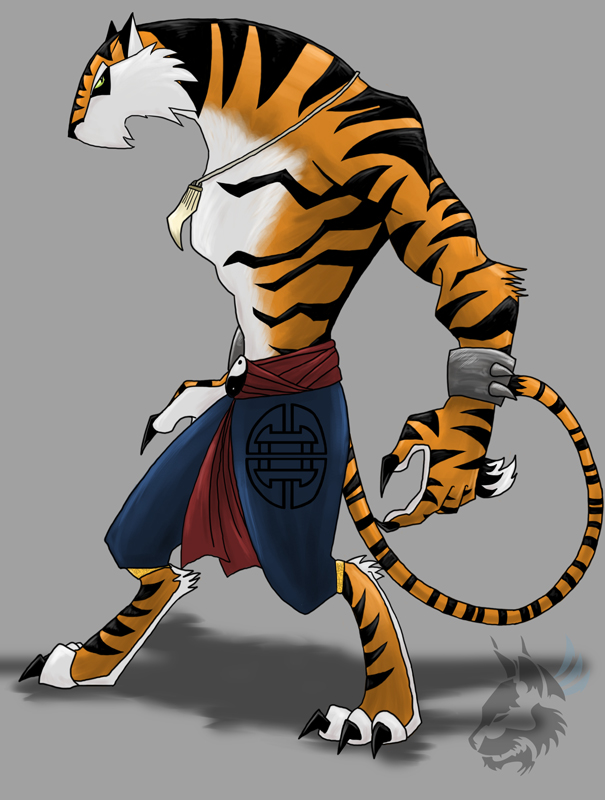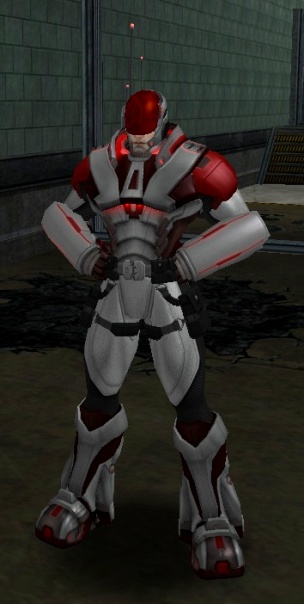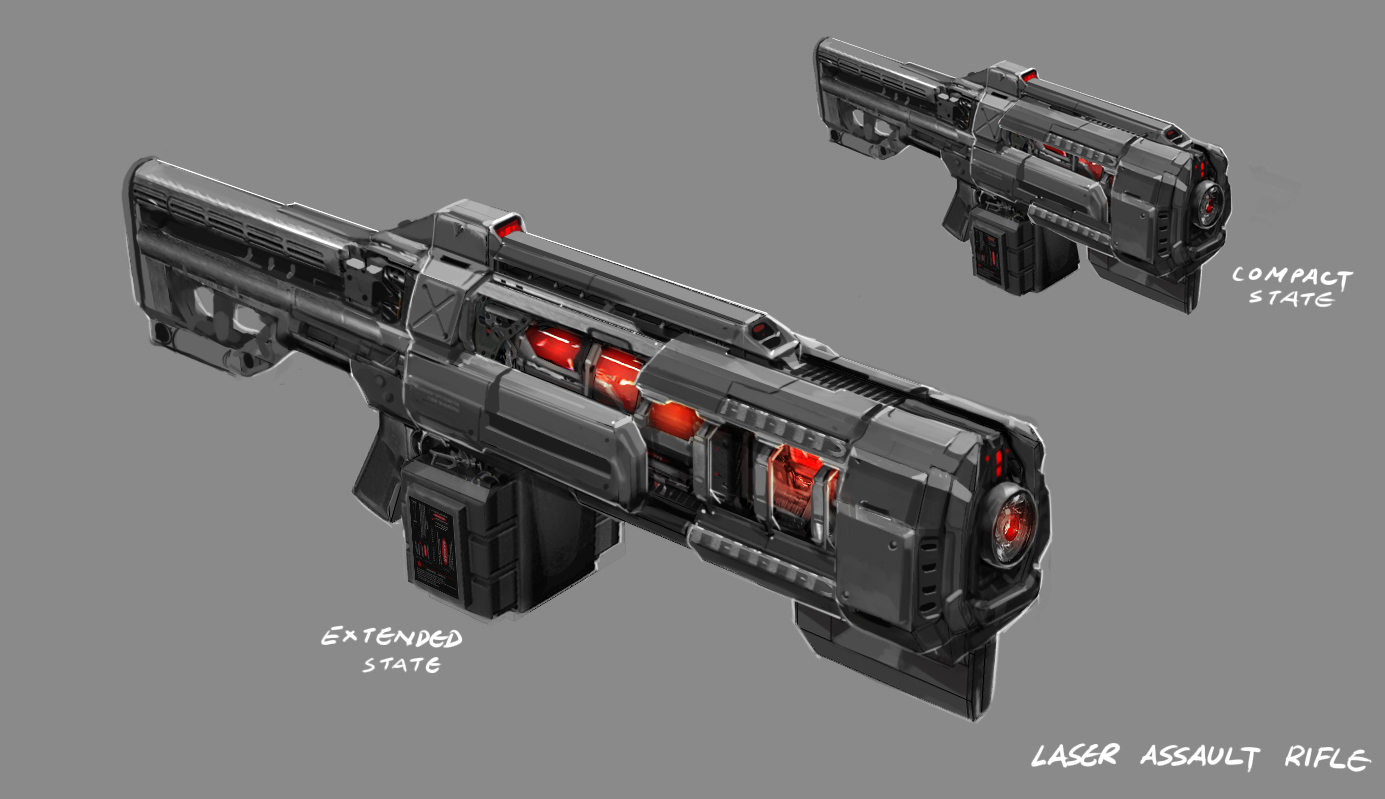Ghost Gang
The Ghost Gang is a team of the main antagonists of the arcade games in the Pac-Man series, frequently appearing in later installments as well, be it as secondary baddies or as allies to Pac-Man.
In this moveset they take most of their moves, behavior and quirks from the original Pac-Man arcade, though like with Pac-Man himself, they use a 3D-model and take a few cues from their Pac-Land incarnation as well.
The Ghost Gang is a four-way tag team, with its default mode being a square, as seen above
Blinky is the leader, losing him means losing the stock whereas the others act more like Nana, following behind for assistance.
The team consists of Blinky, Inky, Pinky and Clyde, each serving different purposes in the team:
Blinky:
The leader of the team, if he is killed, the stock is lost. However, the other ghosts keep going on and even though his respawn time is instantaneous, the trip from the respawn platform to the other ghosts might be enough for the opponent to kill his teammates.
Inky:
As Blinky's right hand ghost, a lot of two-way attacks involve him, which makes him neccesary for completing moves. His respawn time is the second longest, being fourteen seconds.
Pinky:
Pinky is the strategist of the team often taking routes other than headfirst into battle which is reflected in her moves, being the pinnacle of the gang's anti-air and juggling capabilities as well as the source of the team's powerful finishers. She has the second shortest respawn time, being eight seconds.
Clyde:
While Clyde doesn't do a lot for the team, he has an extremely long respawn time at a whopping twenty-four seconds, so he needs to be protected as much as the rest.
Ghostly Mechanics:
The Ghosts are a four-way tag team, but some of the ghosts can't do everything a normal character can and the opponent can't do everything to the Ghosts that one can do to other characters.
Let's break down what the ghosts can and cannot do:
Grab:
As the leader of the team, only Blinky can grab opponents.
The ghosts cooperate with the throws
The opponent can grab every ghost and ghosts cannot attack the grabbing opponent.
Status effects:
Every ghost can suffer from status effects.
HP:
Unlike Luma and more akin to Ice Climbers, the Ghosts do not have an HP bar, instead being KO'd like every other character.
They even come down from the respawn platform when their respawn timer is over.
Shield:
The defensive behemoths that they are, every Ghost is covered by the shield, all sharing one shield.
The Ghosts also all have an air dodge, although it's very laggy.
The team has a below average mobility, having a dash speed reminiscent of Ness's and Pac-Man's air speed.
Despite being ghosts, their fall speed is average as well, though the fact that they are ghosts does reflect in their weight, with each ghosts having Luma's weight, though unlike Luma, they're fairly big, with one ghosts being twice as wide as Mario and reaching up to his nose in lenght
If they're in the default cube mode, they move as one team, with Blinky floating right above Inky and Pinky always floating above Clyde.
If a Ghost is missing during a move, the move continues at the same speed/pace, most probably leaving a blindspot.
When the Ghost missing would execute a move alone, there's just a small animation of the other Ghosts looking confused.
Specials:
Neutral B: Spectral Scatter
The Ghosts scatter in a bigger version of the default square mode by flying diagonally, expanding the room between the ghosts.
After a while, the player only controls Blinky, and the other ghosts go into chase mode being controlled by the AI.
However, the Ghosts follow the same pattern as they did in the original Pac-Man and as you can see later these patterns are all influenced by Blinky's or the opponent's position, which the player can bait out by controlling Blinky.
Inky:
Inky's goal is to reach a spot twice the distance from Blinky to two spaces in front of the opponent, in the direction from Blinky to the opponent. Because of this, Inky's movements will seem a lot more random the farther away Blinky is from the opponent. If Blinky is far away the opponent, Inky will often be wandering off somewhere far ahead of the opponent. But if Blinky is closely following behind it, Inky will usually seem to be following Blinky.
Pinky:
Pinky's movement is very strategic. By following the opponent's direction (approximately four ghosts ahead of wherever the opponent is headed) rather than the opponent himself, Pinky usually ends up taking a roundabout path to them.
Clyde:
Although his behavior might seem random, Clyde actually does chase the opponent (exactly the way Blinky does) most of the time. But when Clyde gets within an eight-ghost radius of the opponent, he starts to retreat to the lower-left corner of the stage.
As you can see, by controlling Blinky alone, one can easily bait the opponent to move into the AI's traps.
For example, one can keep the opponent away from Clyde so that the latter adds pressure onto the former.
During this move, the Ghosts can not only perform every aerial attack and air dodge (Including Specials, although tilts are cut out since they are floating all the time) but they can also perform an extra attack by pressing the button for the Smash attack , where they intract their arms and turn into a 3D-version of their 8-Bit sprite, growing to twice their size.
This attack deals 12% and kills Mario at center stage FD at 110%
If they perform an aerial attack, only the Ghost that attacks in the default move attacks in this version of the move as well.
Every move can be cancelled into this one (though you cannot cancel endlag with it), and one can cancel this move by pressing the B-button, after which the ghosts can act freely again, though they'll try to get into their default positions immediately after the move is over.
This makes it so that you can very easily lock up opponents in between aerials, especially since the aerials also involve the ghosts splitting up.
Side B: Poltergeist Plane
The Ghosts each summon a plane as seen in Pac-Land and in a puff of smoke immediately form a horizontal row of planes, with Blinky in front,
The player can then control the ghosts with a few moves:
The ghosts can go upwards (press upwards on the control stick) or downwards (press down).
On top of that, by pressing A, the ghosts drop one Ghost Bomb each, a Kirby-sized projectile that looks like the original ghost-sprite and that slowly falls and when it touches the ground, it activates and it starts acting like the Ghost Gang when in "Chase Mode".
This means that Blinky's Ghost Bomb chases the opponents headfirst, Inky's decides its route based of off the location of Blinky and the opponent etc.
When the Ghost Bomb touches an opponent, it explodes in 8-Bit fashion (with the color of said "sprite explosion" denoting the "owner" of the bomb, dealing 7% damage and slight upwards knockback.
The Ghosts are not affected by this explosion.
However, since it only starts chasing once it has touched the ground, opponents can destroy the bombs by attacking it.
The move can be cancelled by pressing B, doing so won't affect the bombs.
When the bomb has taken 4% damage, it explodes as well, but this time the explosion won't hurt the opponent, but the ghosts instead
If this move is performed while in Spectral Scatter, the Ghosts don't line up, but just don the planes.
This move is one of the main methods to trap opponents.
Up B: Banshee Bacura:
Inky and Clyde summon a Bacura from Xevious that's slightly wider than their own bodies under them, using their telekinesis to lift them up at the speed of Duck Hunt's recovery to use it as a recovery.
The player can then control the Ghosts slightly, again, akin to Duck Hunt's Duck Jump
The Bacura rotate dealing 10% damage and spike opponents hit
The Bacura also reflect projectiles, though due to the place of the Bacura being under the ghosts themselves and the fact the Bacura are essentially flat, this is more of a fun easter egg than a real threat.
The recovery lasts as long as Duck Hunt's, because the ghosts' telekinesis doesn't last forever.
After a while or when the A-button is pressed while recovering, they throw the Bacura at the closest opponent, acting like Auto-Recticle, with their last bit of telekinesis at the speed of Pac-Man's key, though the projectile has a small start-up speed, similar to Samus's missile.
This deals 15% damage and leaves the Ghosts helpless.
The move can be performed in Spectral Scatter and when Inky and Clyde are missing, in which case the ghosts left each summon a Bacura under them.
When either Inky or Clyde is missing, the recovery speed and distance is lessened,
and the move leaves a nasty blindspot.
Down B: TURN-TO-BLUE:
The ghosts turn into their 8-Bit blue version for a couple frames
When the ghosts are attacked during this time, they turn into 8-Bit eyes and become invincible for a short while
Like many counter moves, there's a decay with each time to move is used.
Damage is also a factor: The lower the damage that would've been received, the shorter the invincibility.
This way, the opponent can bait the move out only to jab the Ghosts and punish the endlag of the counter!
On top of that, the current damage also factors into the move's invincibility:
The higher the Ghosts' damage, the longer the invincibility is, although the decay from using it gets heavier.
So just like in the original arcade game, a good Ghost Gang only counters when it's a threat to the Ghost Gang and although using it badly can cost you stocks, it can still be a game-changing move by using it correctly
Final Smash: Maze Craze
Blinky summons the ghosts "spawn box" from Pac-Man and lifts it up swiftly with his telekinesis.
Opponents trapped are then part of a small cutscene, where all four ghosts repeatedly slam opponents into the walls of the spawn box, dealing up to 90% damage.
The opponent is then launched as the box dematerialises in blue pixels.
Ground Moves:
Jab:
Blinky leans slightly forward, delivering a straight punch with the right hand, followed by Inky doing the same. These hits do 2% each and deal no knockback.
After that, they jump up a bit, allowing for Clyde and Pinky to slide under the two ghosts similar to Rosalina's Dash Attack, with Clyde at the bottom, for a third hit, while Blinky and Inky slide with their undersides from left to right (akin to Rosalina's Forward Tilt) to "kick" with their undersides, dealing 4% damage
The stack that appears is as tall as Ganondorf, so it's a great walling tool.
Forward Tilt:
Blinky puts his arms parallel to his body and floats horizontally, smashing forward for a headbutt, dealing 4% damage and moderate knockback, followed by Inky doing the same for a two-hit combo dealing 8% in total and being a kill move at the ledge, killing there around 120%
The move, like Jab, requires Inky to complete so the player has to make sure Inky's present as the move is a good stock cap at higher percents.
Up Tilt:
Pinky looks up delivers a swift uppercut with her right arm, swinging it upwards, dealing 6% damage.
Blinky does the same, but with his left arm, dealing 2%
This move deals very little knockback, allowing it to combo into itself and other moves at low percents.
The move's range gets bigger when Inky and Clyde are still in the game, as they hold the other ghosts like a kite during this move, increasing the move's range with fifty percent.
Down Tilt:
Clyde finally gets his solo debut! As Inky jumps next to Blinky, Clyde slides under his brethren, headbutting everybody in his range for 6% damage. After that, he makes a U-Turn back to his original position.
Though Clyde travels a fairly good lenght, the lack of disjoints makes it easy to swat Clyde away.
Dash Attack:
Blinky slightly tilts his body at a 45* angle so that his right side is facing slightly upwards (left if Blinky's facing left in this move)
Inky swiftly turns upside down clock-wise, eventually turning him so that his right (left side if facing left) is turned downwards a bit
Now that they've taken their new positions, wait...
that's not just any position.
That's Pac-Man's famous pizza slice form!
Anyway, when they've taken their nemesis' natural form, all ghosts keep running forward, while Blinky and Inky tilt their bodies so that it's like Pac-Man's chomping.
This goes on for five quick cycles, dealing 2% damage in each of the first four chomps, with the final chomp dealing 5% damage and medium horizontal knockback.
The chomps are slower compared to Pac-Man's, making them unsafer on shield.
However, the final hit deals both more damage and knockback and the middle hits have very small knockback, not allowing for any escapes.
Like Pac-Man's Dash Attack, this move is fairly bread and butter for the ghosts as it is both quick and strong, dealing a lot of damage and putting opponents off-stage even at low percents, due to the horizontal knockback.
This pure horizontal knockback also makes it a strong kill move at the ledge, killing Mario at 90% at the ledge.
Smashes
Forward Smash:
Pinky grabs Blinky before using him as a sword for a horizontal slice, dealing 5% damage, but no knockback.
Instead, Clyde, startled for missing his intial cue, quickly grabs Inky for a stab, dealing 7% damage and heavy knockback, killing Mario at the centre of FD at 100%
Though strong, the move needs all of the ghosts to be effective, as without Clyde or Pinky, the move considerably lessens in range, only hitting the opponent at point blank range.
When Inky is missing, the move can't finish itself, as only Blinky's hit is left
Up Smash:
Pinky flies upwards before crashing down, the trail having Marth's Up Air's range (although Pinky flies straight up)
Opponents hit get caught in the flight path, so that Pinky can take them with her in her crash.
The Ghost deals 4% if she manages to hit the opponent.
However, to make the crash landing safer, Clyde, Inky and Blinky (who joins Inky to the left for a line) duck before springing upwards when Pinky lands on them (Or, when she's absent, when she would land)
The opponents caught in the flight path of Pinky will also crash in Clyde, Blinky and Inky, dealing 8% damage and heavy knockback. (Although its short range without Pinky and overall long duration makes up for it)
Down Smash:
Clyde and Inky glide to the side over the ground, headbutting the opponent, dealing 6% damage and a small amount of knockback.
However, the main draw of the move is not the slide of the ghosts at the underside, but what Blinky and Pinky do with the room left by the other ghosts.
Pinky and Blinky namely fly up at a small angle, crossing eachothers paths, do a small looping and crash down straight down headfirst.
This attack deals 8% damage and high diagonal knockback, killing Mario at 130% at the center of FD.
Aerials:
Neutral Air:
The Ghosts propel themselves to the corners by flying to them diagonally (So if they're facing right, Blinky flies to the upper right corner)
This deals 4% damage and light knockback.
However, they then propel themselves back to their original position, dealing 5% damage and medium knockback.
Forward Air:
Blinky flies up at a slight angle before falling down again, flying in a slight arc pattern, like Marth's sword in his Forward Aerial, dealing 7% damage and medium forwards knockback
Inky at the same time flies down before flying up again dealing 6% damage and slight upwards knockback, meeting Blinky in his flight pattern, making a circle pattern because of their similtanious flights.
Clyde and Pinky then quickly fly forwards to adapt to Blinky and Inky's new positions. This flying deals 3% damage and light backwards knockback
The move has the range and speed of Shulk's Forward Air.
Up Air:
Pinky flies, wait, what is she doing? Why is she flying sideways?
She's flying to the side in an up air!
Anyway, she flies to the side before making a U-Turn, bashing into any opponents that happen to be above the ghost gang.
When she touches an opponent she stands up like the end of Rosalina's Dash Attack, bashing opponents up in the air, dealing 8% damage and killing pretty early for an aerial this fast.
Back Air:
Clyde flies backwards headfirst for a short distance, where he stops for a while, flying horizontally around in one spot while deciding if he should go in more or should get back to his friends. Opponents that get hit by his erratic movement are stuck for 6% damage (like Mega Man's Back Air)
Eventually he headbutts once for an additional 4% damage and medium knockback before he calls quits and goes back to his friends (who have fallen down a bit during the move)
Down Air:
Inky uses Clyde as a trapeze, as he grabs onto Clyde's left arm. Blinky in his tirn grabs onto Inky, creating a line of "acrobats" They then swing in a half circle towards Pinky, who puts them back into their original position.
Opponents that hit one of the ghosts get 6% damage and are knocked sideways
Grab:
A Bacura appears and flips around.
Opponents hit are then automatically in Blinky's telekinesis.
A fairly laggy grab.
Pummel:
Blinky headbutts the opponent for 2% damage
Forward Throw:
Blinky thinks hard and throws them away, dealing 4% damage and light knockback.
Up Throw:
Blinky throws the opponent up, dealing 2% damage.
Inky then throws Blinky upwards for an extra hit for another 4% damage, though the knockback is still very light.
Back Throw:
Blinky throws the opponent backwards, dealing 6% damage
Clyde then kicks the opponent for an additional 3% damage.
Down Throw:
Blinky hits the opponent with his tentacle-thingies, while Inky is getting ready in position.
Blinky then throws the opponent to Inky who gives an additional headbutt,
This deals 7% damage and light knockback.
Playstyle
The Ghost Gang is essentially a combination of Rosalina and Luma and Ryu.
On steroids.
Using Spectral Scatter at the right time, one can create devastating comboes, like Ryu.
The aerials lend themselves well for long strings and with the right placement of Ghosts, one can really lay down a beating making it really hard to escape.
On top of that, their floaty nature, Spectral Scatter, Poltergeist Plane and TURN-TO-BLUE can make it seem like the Ghosts have no disadvantage state which makes it really hard to combo them.
However, they also combine Rosalina and Luma's and Ryu's weaknesses.
Specifically, their low range and low mobility make them prone to getting camped or walled out.
Like in the source game, the best way to deal with the Ghost Gang is to stay away, before striking when the time is right!
Their low weight makes it so that a good hit can kill them pretty easily, so punishing, chipping and staying away is the way to go!
The fact that the recovery is extremely gimpable makes matters even worse when the Ghosts are caught.
On the flip side, the Ghosts' goal is to close the distance between opponent and gang, using Spectral Scatter and Poltergeist Plane to trap the opponent in a nasty situation!
Many aerials can lock opponents between the four ghosts, such as Forward Air and Neutral Air.









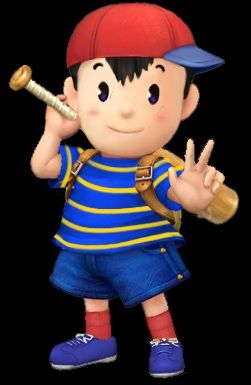













.png/revision/latest?cb=20141012054722)

 Index:
Index:






